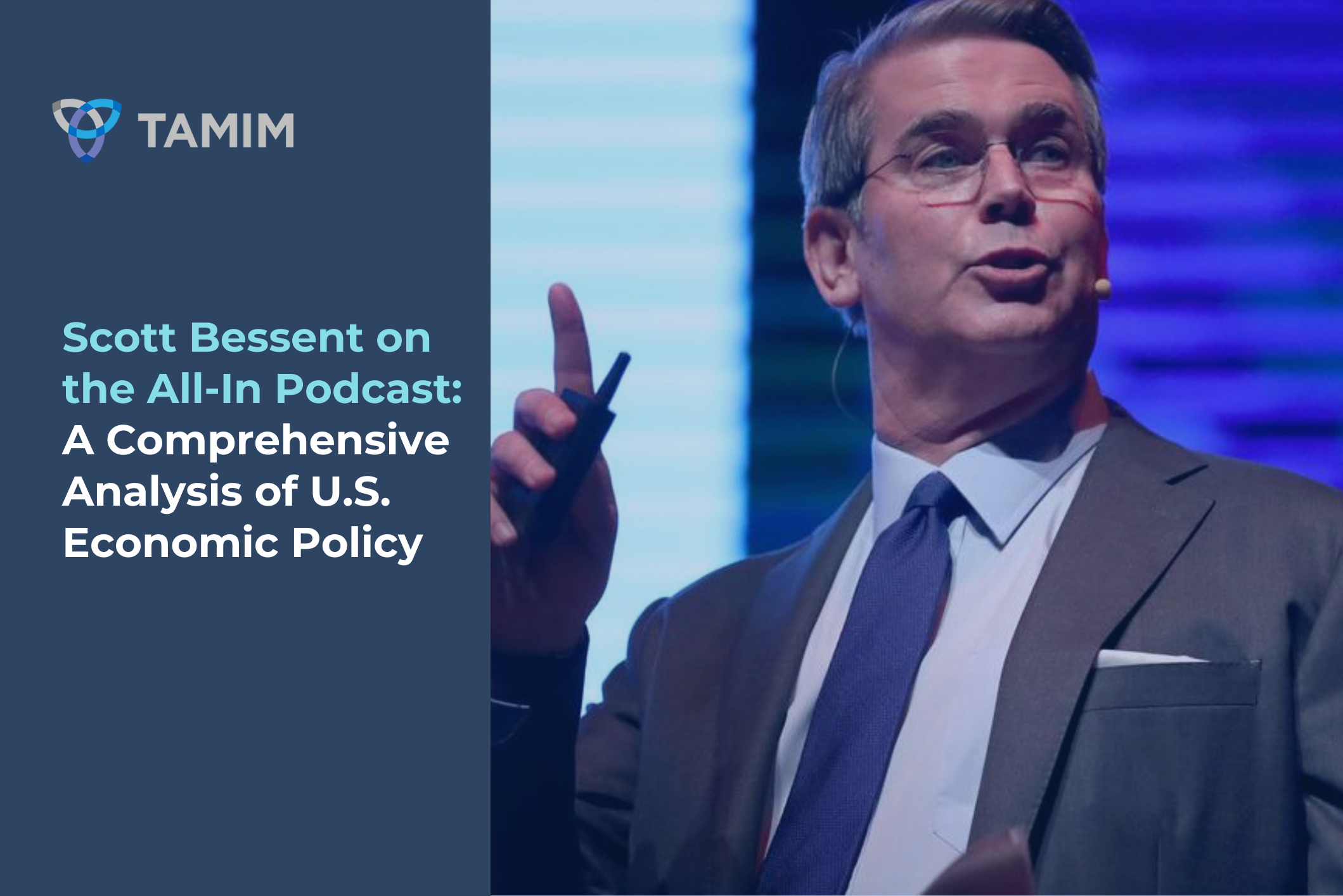In a recent episode of the All-In Podcast, Scott Bessent, the newly appointed U.S. Treasury Secretary under President Donald Trump, provided deep insights into the economic challenges facing the United States. The conversation, hosted by Chamath Palihapitiya, and David Friedberg, was expansive, covering topics from debt management to deregulation and the establishment of a sovereign wealth fund.

As the former Chief Investment Officer of Soros Fund Management and founder of the hedge fund Key Square Group, Bessent’s insights are grounded in decades of financial experience. His tenure as Treasury Secretary is likely to shape U.S. economic policy for years to come, with significant implications for global markets, including Australia.
This analysis will break down the key points discussed during the podcast, examining their potential impacts and providing statistical context where applicable.
National Debt and Deficit Concerns
One of the central themes of the conversation was the alarming trajectory of the U.S. national debt and deficit. The U.S. budget deficit recently hit a record $840 billion over a four-month period, a figure reported by Bloomberg that highlights the unsustainable nature of current fiscal policy.
Bessent drew comparisons to European economies that have been caught in cycles of stagnation due to excessive debt accumulation. His plan emphasises the need for targeted spending cuts, particularly within areas of wasteful government expenditure. According to the Congressional Budget Office (CBO), U.S. debt is projected to exceed 125% of GDP by 2030 if current trends continue.
Revitalising the American Dream
Bessent’s vision for economic policy includes restoring key aspects of the American Dream: home ownership, financial security, purposeful employment,
and the ability to support a family without the need for multiple jobs. He emphasised that this vision requires addressing both inflation and wage stagnation.
According to data from the U.S. Bureau of Labor Statistics, real wages have grown by only 0.7% annually over the last decade, failing to keep pace with rising costs of living. This dynamic has exacerbated income inequality, a problem Bessent aims to tackle through deregulation and enhanced productivity.
The ‘3-3-3’ Economic Strategy
Perhaps the most ambitious proposal laid out by Bessent was his ‘3-3-3’ economic strategy:
- Achieving 3% real GDP growth.
- Reducing the budget deficit to 3% of GDP by 2028.
- Increasing U.S. energy production by 3 million barrels per day.
The implications of this policy are profound. A return to 3% GDP growth would significantly boost tax revenues and potentially ease the burden of debt repayment. However, reaching this target will require structural reforms that enhance productivity and incentivise private sector investment.
Addressing Government Spending
Bessent’s approach to fiscal discipline focuses on reducing government expenditure rather than increasing revenue. He argued that the U.S. faces a spending problem, not a revenue problem. This view is supported by recent data from the Tax Foundation, which shows that U.S. tax revenue as a percentage of GDP is already among the highest in the developed world.
A focus on expenditure cuts, rather than tax increases, could mitigate the risk of dampening economic growth while still addressing fiscal imbalances.
Deregulation Initiatives
Bessent’s commitment to deregulation is aimed at fostering economic growth by reducing bureaucratic constraints on businesses.
His focus includes sectors like financial services, healthcare, and energy.
According to the American Action Forum, regulatory costs on the U.S. economy exceed $2 trillion annually.
Rolling back inefficient regulations could boost productivity and enhance the competitiveness of American industries on a global scale.
Reordering International Trade and Revitalising Manufacturing
Bessent outlined a vision to restructure international trade, promoting domestic manufacturing through tariff incentives and supply chain resilience.
This strategy aims to revitalise the U.S. middle class by bringing high-paying manufacturing jobs back to American soil.
Establishing a U.S. Sovereign Wealth Fund
The proposal to create a U.S. Sovereign Wealth Fund is one of the most radical ideas presented by Bessent. The aim is to better manage and grow national assets to generate higher returns and reduce reliance on debt. This approach mirrors the success of countries like Norway, whose Government Pension Fund Global has grown to over $1.4 trillion.
Balancing Energy Policies
Energy security was another priority discussed by Bessent. He highlighted the need for a balanced approach that includes both traditional fossil fuels and renewable energy sources. The goal is to reduce energy costs for consumers while ensuring the U.S. remains a global leader in energy production.
The TAMIM Takeaway
From an Australian perspective, Bessent’s policies are of significant interest. The deregulation of financial markets and emphasis on productivity growth could have positive implications for global capital flows, potentially benefitting Australian companies with exposure to the U.S. market.
Moreover, the establishment of a U.S. Sovereign Wealth Fund could have far-reaching consequences for asset allocation and investment trends.
As always, TAMIM remains focused on navigating these shifts with insight, foresight, and a steady hand.
